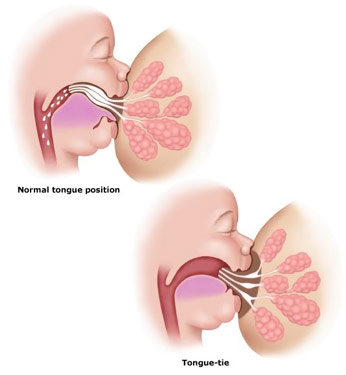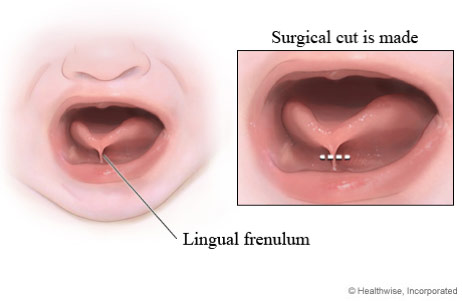- New Sublingual Allergy Tablets - October 31, 2014
- Ground-breaking New Treatment Option for Sleep Apnea - September 27, 2014
- Allergies versus Viruses in Children - September 27, 2014
- “Dog Dust” Protects Children from Allergies - September 27, 2014
- Nasal Saline Irrigation - August 8, 2014
- Doctor, I am Allergic to Dust. What Can I do? - July 31, 2014
- Infants Exposed to Dust Mites Less Likely to Develop Allergies - June 23, 2014
- How to Treat a Young Child’s Cough - December 17, 2013
- Many Parents are Unaware That Their Children Are at Risk for Noise Induced Hearing Loss - December 9, 2013
- Is it a Cold or an Ear Infection? - December 9, 2013
Question: I just had a baby girl three days ago and have been having difficulties breastfeeding. My lactation consultant noticed my daughter has “tongue tie” and thinks this may be causing my daughter to have a poor latch during breastfeeding. I don’t want to do anything too aggressive but breastfeeding is painful and she seems to be struggling. What is tongue tie and might it be causing breastfeeding problems?
 Discussion:
Discussion:
Many parents of infants with feeding issues are concerned or have been told their child may have tongue tie. Tongue tie is common, but occurs more frequently in infants with breast feeding issues. Tongue tie is sometimes noticed soon after birth in the hospital by the parents, a nurse or the pediatrician. Other times it is noted when an infant is being evaluated for feeding issues by a physician or lactation consultant. Tongue tie often runs in families.
Normally, the tongue is attached to the bottom of the mouth by a short membrane called the frenulum (or frenum). Tongue tie or ankyloglossia, means the tongue has a shorter frenulum than normal, which tethers the tongue and restricts its movement. Because the tongue must be extended under the nipple for breastfeeding, tongue tie can make breastfeeding difficult or impossible for the infant and painful for the mother.
Symptoms of tongue tie include:
- Difficulty with latching or maintaining a good latch when breastfeeding
- Chewing motion rather than sucking during breastfeeding
- Nipple trauma and discomfort for mom during breastfeeding
- Ineffective milk transfer causing inadequate weight gain
- Infant unable to stick the tongue out
There is some debate as to how best to treat tongue tie, but the Academy of Breast Feeding Medicine and the American Academy of Pediatrics support frenulectomy for babies who have symptoms. Treatement of tongue tie is done early, to improve tongue mobiity for breast feeding and speech development.

Treatment of tongue tie is a procedure called a frenulectomy, which is clipping the membrane under the tongue. A frenulectomy can usually be performed on infants in the hospital after birth or in the office with or without anesthesia. If the frenulum is thicker or difficult to reach, it may be recommended to be done in an operating room.
If an infant is not having feeding issues, there is still the risk of future feeding issues or speech delay. However, it is less important to proceed immediately with a frenulectomy in this case. The parents may opt to wait and see if problems develop. However, because the infant tolerates this simple and quick procedure so easily, performing the procedure as a preventative measure is also a reasonable option. This decision is made in consultation with a pediatric otolaryngologist.
Key Points:
- Frenulum: the attachment of the tongue to the bottom of the mouth.
- Tongue tie is defined as having a short or tight frenulum, which restricts tongue movement and may cause problems with feeding or speech development.
- Frenulectomy is the procedure that treats tongue tie. It can be done safely, quickly, and painlessly in the office in infants as young as 1 day old.
- Frenulectomy is the treatment for breastfeeding issues related to tongue tie and is performed by a pediatric otolaryngologist.



